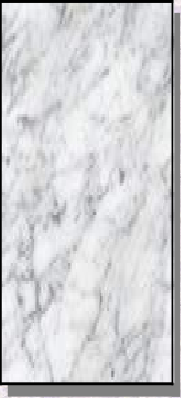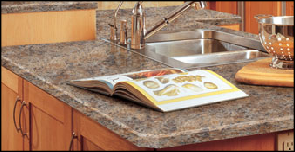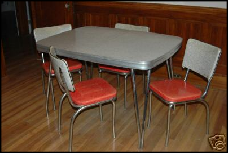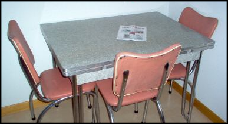



7 th February 2008

There have always been developments in materials that have led to a change in the approach that designers have towards their designs of products and interior designs but Daniel O’Conor’s (with Herbert Faber) introduction (1913) of a new surface covering has had far reaching consequences for the modern kitchen. Phenolic resins impregnated into layers of paper and heated under pressure are transformed into thin hard layers of ’Formica’ - A hard surface which when bonded to other manufactured boards provided a practical and easily cleaned and attractive layer. In 1927 the company began printing on the new material and these images were created vibrant pattened surfaces reminscent of existing textiles and natural materials.
In 1938 the surface was further improved with the addition of Melamine to the surface – this made it harder and even more resistant to liquids and in 1957 the Formica Corporation asked Raymond Loewy to design attractive artwork to print on the surface – A more fashionable
In 1938 the surface was further improved with the addition of Melamine to the surface – this made it harder and even more resistant to liquids and in 1957 the Formica Corporation asked Raymond Loewy to design attractive artwork to print on the surface – A more fashionable

Inventors & Inventions
IF IN DOUBT ASK !!!!
decorative image that would allow the material to expand its market into far more domestic situations. Increasingly the material was used in more sophisticated ways and still finds a use today in virtually every home in the country. Only time will tell if the ‘icon’ surface continues to be used as prolifically as in the past.
The origins of surfaces coated with resin had been developing throughout the early 20th Century and even earlier at the end of the 1890’s when vulcanised fibres created by the pressing of heated Zinc chloride treated papers were patented. In fact an extensive timeline for ‘plastics’ exists.... At this time of materials development, Leo Baekland was working at producing what might be considered to be the first commercial ‘plastic’ that he had named ‘Bakerlite’ and Baekand’s company was supplying liquid resins to Westinghouse Electric for use in making paper-based laminates - intended as insulation papers. Previously mica had been used in components and the new products using phenolic resins were designed to replace this material. One of the workers at Westinghouse at this time was Daniel O’Conor along with a colleague Herbert Faber and it was the pair that left to use their foundation of knowledge to develop their patent for Formica.
The origins of surfaces coated with resin had been developing throughout the early 20th Century and even earlier at the end of the 1890’s when vulcanised fibres created by the pressing of heated Zinc chloride treated papers were patented. In fact an extensive timeline for ‘plastics’ exists.... At this time of materials development, Leo Baekland was working at producing what might be considered to be the first commercial ‘plastic’ that he had named ‘Bakerlite’ and Baekand’s company was supplying liquid resins to Westinghouse Electric for use in making paper-







